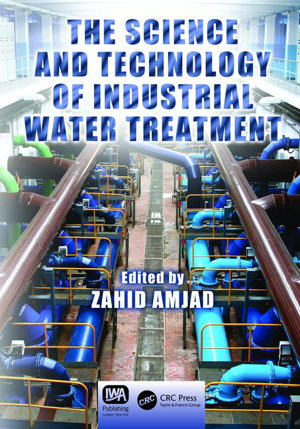| Sun | 10am – 5pm |
| Mon | 9am – 5:30pm |
| Tue | 9am – 5:30pm |
| Wed | 9am – 5:30pm |
| Thu | 9am – 5:30pm |
| Fri | 9am – 7pm |
| Sat | 9am – 5pm |
Ask our staff anything about our shop or products, or share your feedback.

PublishedCrc Press, October 2016 |
ISBN9781138198975 |
FormatSoftcover, 530 pages |
Dimensions25.4cm × 17.8cm |
Mineral scale deposits, corrosion, suspended matter, and microbiological growth are factors that must be controlled in industrial water systems. Research on understanding the mechanisms of these problems has attracted considerable attention in the past three decades as has progress concerning water treatment additives to ameliorate these concerns. The Science and Technology of Industrial Water Treatment provides a comprehensive discussion on the topic from specialists in industry and academia.
The book begins with an overview of water chemistry and covers the characteristics of commonly encountered mineral scales. It addresses the formation and control of different scales in various systems and examines new developments in membrane-based separation processes. Next, it provides a detailed account on the operational challenges of reverse osmosis systems and scale control in thermal distillation processes. The text explores corrosion control in cooling, boiler, geothermal, and desalination systems and it discusses the interactions of polyelectrolytes with suspended matter.
Includes coverage of a range of bacterial species, including Legionella
The book examines bacterial species commonly encountered in water supplies, the mechanisms of biofouling, approaches to control it, and criteria for selecting biocides for water treatment applications. An entire chapter is devoted to Legionella in water systems. Contributors describe various analytical techniques for identifying mineral scales and deposits. They also examine applications of polymers for treating industrial and wastewater systems and give an account of analytical approaches for monitoring various operational parameters and chemicals used to treat industrial water systems.
A valuable addition to the library of academic researchers, this volume will also prove useful to those working not only in the water treatment industry, but also to those in petroleum, textiles, pharmaceuticals, and other areas where purity processes are a significant concern.

